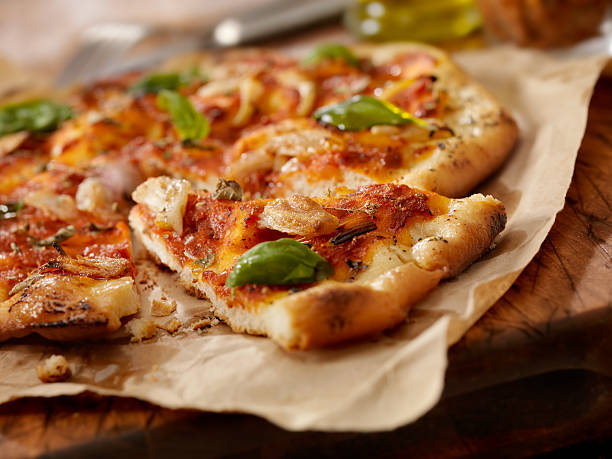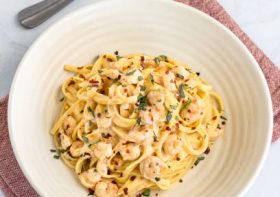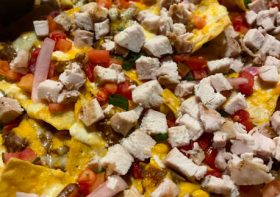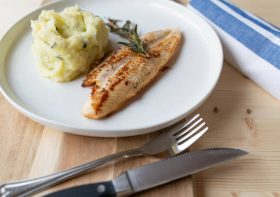Flatbread Gluten-free

Since we’ve wanted to make a vegan, gluten-free flatbread, we were delighted when we finally succeeded.
This bread is fluffy and light. It is also flavorful. The preparation is as easy as can be: Combine wet ingredients in a mixing bowl, then add the dry ingredients. Stir, roll, and pan-fry. That’s it! This whole process can be completed in one bowl of about 20 minutes. Gluten-free, fresh, fluffy bread that is perfect for snacks, wraps, dips and more. We’ll show you how to do it.
Flatbread: Origins
Flatbread, also known as unleavened bread (a.k.a. flat is a bread that’s made with flour, salt, and water. Its origins date back to ancient Egypt and Mesopotamia.
There are now hundreds of variations, including our Garlic-Herb Flatbread or Easy Vegan Naan. These are loved all over the world. Now, our gluten-free version is ready to join the party.
How to make gluten-free flatbread
Making gluten-free flatbread is all about the right combination: gluten-free flour and fats with a little extra fluffiness.
We use coconut flour, oat flour, and potato starch to lighten up the texture of our flour. Coconut milk and extra virgin olive oil are healthy fats that prevent sticking and add moisture and flavor.
While leavening may not be used for flatbreads, it is important when baking gluten-free — no hockey stick flatbreads here! Baking powder and apple vinegar create a foamy, fluffy reaction, which adds lightness.
The flatbread is then rolled between parchment paper sheets for a mess-free roll.
When you’re ready to eat the flatbread, cook it in a skillet on medium heat for a couple of minutes per side.
Ingredients
- We haven’t tried other dairy-free products yet.
- 1 tbsp of olive oil (if you don’t have oil, leave it out or substitute a jar of hummus).
- 1 tsp apple cider vinegar
- 2 tsp of baking powder
- Half a teaspoon of sea salt
- 1/4 tsp Garlic powder
- Oregano dried, 3/4 tsp
- 1 cup Coconut flour*
- 1/4 cup oat flakes*
- You can substitute potato starch for the, but we don’t recommend it.
For Rolling optional
- 14 cup all-purpose gluten-free flour
Instructions
- Add the olive oil and apple cider vinegar to a medium bowl and whisk together.
- Mix baking powder, salt, garlic powder, and dried oregano. This mixture may foam and fluff due to the reaction between the apple cider vinegar and baking powder. This is perfectly normal!
- Add coconut flour, oats flour, and potato starch. Stir with a wooden spatula to combine. Let rest for 5 minutes uncovered.
- It would be best if you now had a dough that is slightly tacky but not sticky. When the dough is moist enough, it should begin to pull away from the bowl’s sides. It shouldn’t crumble at all. You can add a little more of each type of flour until the dough reaches the desired consistency.
- Place one ball of dough (about 3 Tbsp) between two parchment papers. Roll the dough into an oval shape that is slightly thicker than 1/8 inch with a rolling pin. Roll the dough to a thickness of less than 1/4 inch for a fluffier and thicker flatbread. Cook slightly longer. NOTE: If the dough is sticking or becoming too tacky, add a dusting of gluten-free flour while rolling it out.
- Heat a skillet over medium/medium-high heat (cast iron or non-stick is best). Spray or drizzle a small amount of oil on the skillet once it is hot. Use your hands to transfer the dough into the pan. You can patch it back up with your hands if there are any cracks.
- Cook for 2 to 3 minutes or until the bottom is golden brown. It’s okay if bubbles form during cooking. Flip the pan carefully and continue cooking for 2-3 more minutes. Reduce heat if necessary to prevent burning. When both sides of the burger are golden brown, you’ll know that it’s ready.
- Continue this process until you have used all the dough (6 large flatbreads or 10-12 small flatbreads, as written in the original recipe).
- Leftovers can be stored in the fridge or at room temperature for up to 2 days. Place cooked and cooled flatbreads in a freezer-safe bag or container (adding parchment between each flatbread prevents sticking). Freeze for up to one month. Fresh is best, as with most breads.
- The heat from frozen in the toaster, let it thaw overnight, and then reheat in a skillet or heat from frozen using a microwave.




Leave a Reply